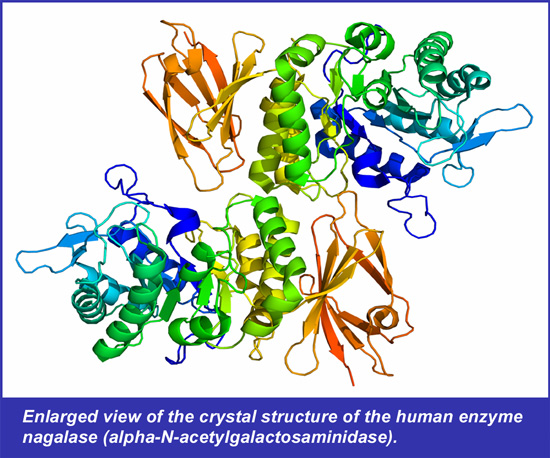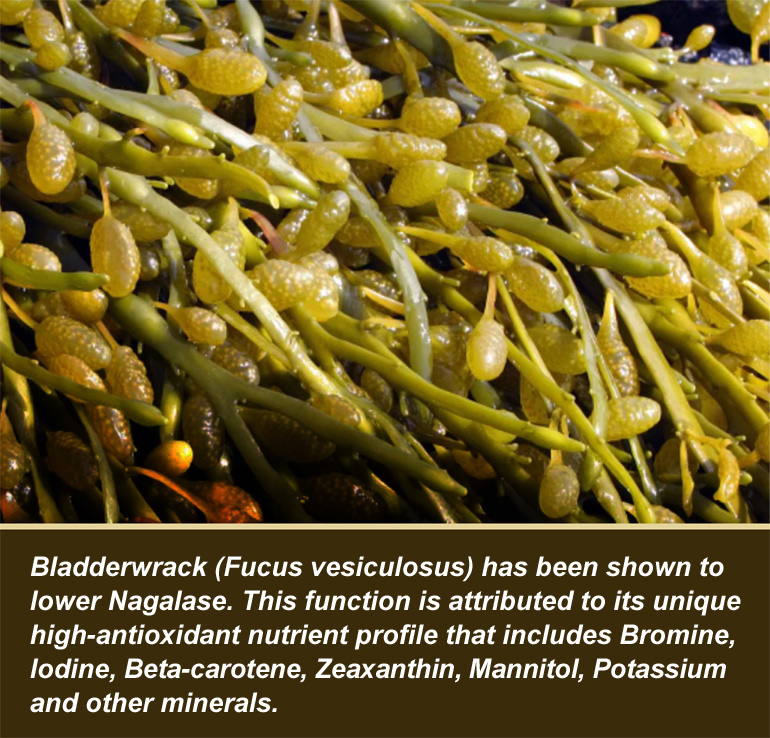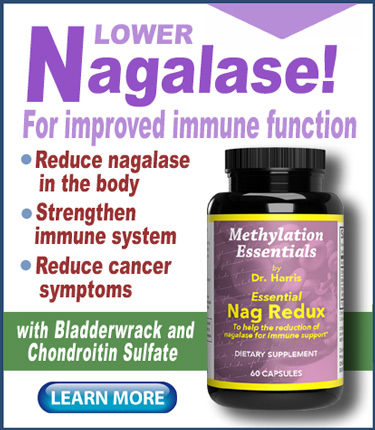Nagalase is an enzyme with the technical chemical name alpha-N-acetylgalactosaminidase. It has an important role in the body and is essential for optimal health; however, elevated amounts can be an accurate indicator for serious health issues.
Nagalase breaks down certain glycoproteins (sugars attached to protein) and glycolipids (sugars attached to lipids/fats). This is an essential biological function.
This process is so important that when nagalase is not working as its supposed to glycolipids and glycopeptides accumulate in the body’s tissues. This results in Schindler disease, a metabolic disorder that causes issues with the nervous system.
Elevated nagalase
On the other end of the spectrum is the occurence that is much more likely to happen: nagalase levels become elevated (i) and end up contributing to the suppression of the immune system.
It is this link to the suppression of the immune system that for the past 25 years nagalase has been used as a tool to help improve the immune system. First, the nagalase level in the blood can be measured to assess immune function; secondly, by bringing the nagalase level down a person can hopefully improve immune function.
Nagalase retards immune function by preventing the activity of important immune cells called macrophages. Macrophages—which means “large eaters” in Greek—are a type of white blood cell that engulf and digest pathogens. This long list of pathogens includes cancer cells, microbes, viruses, cellular debris and foreign substances.
When macrophages are prevented from “eating” pathogens, the cancer cells and viruses end up synthesizing more and more nagalase. This is why measuring nagalase levels has been used in recent decades by some clinics for measuring the risk of cancer. Conversely, for a patient under treatment, checking nagalase levels can be used to measure improvement.
Brief history of nagalase as a diagnostic tool
Using nagalase as a cancer diagnostic tool had it’s origins in 1998, when a research group led by Dr. Nobuto Yamamoto found that invading viruses and cancer cells use nagalase to infect the host and spread. Dr. Yamamoto’s conclusion, published in the British Journal of Cancer, was: “Nagalase measurement could serve as a diagnostic and prognostic index that might allow oncologists to design the dosage or nature of treatment.” (PDF of Dr. Yamamoto study available here.)
However, cancer is just one aspect of using nagalase as a diagnosing tool. In a broad sense, elevated nagalse indicates a compromised immune system—which can manifest in numerous ways.
Elevated nagalase has been reported in systemic disorders including systemic lupus erythematosus. Elevated nagalase levels have also been found in the blood of children with autism and autism spectrum disorders. Nagalase has also been shown to be linked to thyroid issues—and thyroid function returning to normal when the nagalase level is optimized.
According to supplement database SelfDecode.com, a high nagalase level can also be an indication of viral infections, and, according to an observational study of 100 people, it can also be linked to excessive alcohol consumption.
It’s not just about cancer
Though Yamamoto’s research has proven to be controversial, his original claim that increased nagalase activity has never been detected in the blood of healthy humans, is yet to be proven false.
So, while most oncologists today would only use a nagalase test as coroboration for other more widely-accepeted medical practices, they fail to acknowledge the benefit of measuring nagalase levels as a predictor of overall health and how well the immune system is functioning in general.
In the same way that measuring vitamin levels, bowel toxicity or thyroid function can assist in gaining a “snapshot” of a person’s health, so too can measuring nagalase level provide an insight to overall health. Decreasing a high nagalase level ushers in many immune improvements—and lowering the cancer threat is acknowledged by many health practitioners as one of these improvements.
While nagalase level management remains mostly in the perview of nutritional clinics for now, a 2017 review and hypothesis predicted that this will change in the future.
“We predict that with the use of gene silencing methods, reduced expression of nagalase and consequently reduced cancer cell invasion capability can be achieved,” researchers wrote in a review published in the open access oncology journal, JBUON. (PDF download of this review is available here.)
How do you reduce nagalase?
Reducing or eliminating nagalase production essentially happens in three different ways:
1) Traditional Medicine: Chemotherapy and radiation will lower nagalase production; however, these methods are clearly invasive and toxic, and will harm normal, healthy cells too.
2) Natural Therapies in Clinical Setting: Nagalase reduction therapies can be done in specialized clinics—usually setup for cancer treatment. These clinics use GcMAF (Gc protein-derived macrophage activating factor) or Salicinium, both of which are available in intravenous and oral forms.
3) Nutrition & Supplements: Fortunately, nagalase can often be reduced naturally through an anti-inflammatory diet that is high in antioxidants. This method does not harm healthy tissues, but enables the immune system to eliminate nagalase. Two nutrients especially helpful in this battle include bladderwrack—a type of algae—and chondroitin sulfate.
Both nutrients are featured in Essential Nag Redux from Optimal Health Systems. Click banner ad on this page to learn more.
Learn more about bladderwrack in our previous article Can kelp and bladderwrack help solve the hypothyroidism pandemic.
– – –
Sources: Links are provided within the article.



